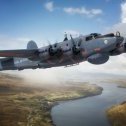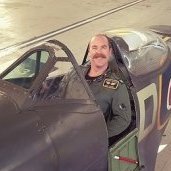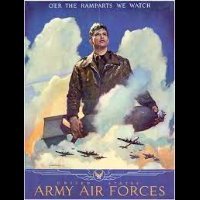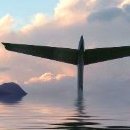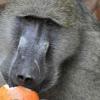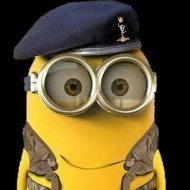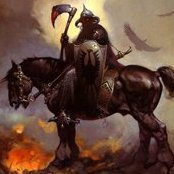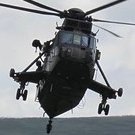Leaderboard
Popular Content
Showing content with the highest reputation on 11/06/21 in all areas
-
III/EJG2 was a training squadron created to help German pilots to master the new 262 jet. Based at Lechfeld, this machine carries the locally applied green 3 as the S for schule(school) under the horizontal surfaces. I created those markings with home made masks, including the serial. The camo is RLM83/75/76 and references are to be found in the Jagdwaffe volume dealing with the jets and rocket planes. The Hobby -Boss kit is pretty good but a step under the Tamiya's one, albeit for half the price. Colors are Mr Color lacquers, weathering was done with oils. Cheers and have a great WE! 7DB36D71-4ED0-48B9-9224-0A1951B78D6C_1_201_a by jean Barby, sur Flickr 13E579D1-28FE-48EA-AC5D-CE7CF994A1FB_1_201_a by jean Barby, sur Flickr 32406001-2235-4780-B8AD-AC7E8B340D78_1_201_a by jean Barby, sur Flickr 0CFF40E4-3EE3-4E75-9A51-F971257C9E58_1_201_a by jean Barby, sur Flickr BF712539-C29A-4789-B652-A65641FBFDD2 by jean Barby, sur Flickr 2CD6AC99-EF9C-4A61-901A-DEA4CE0970FB_1_201_a by jean Barby, sur Flickr 7A2F5DA6-05AB-45EB-B3A2-9FC0F61E3DB5_1_201_a by jean Barby, sur Flickr41 points
-
Hiy Folks, Well it was eagerly awaited but worth the wait,..... the Arma Wildcat Mk.VI (FM-2) is a lovely little kit and really looks the part,..... I believe they also have an F4F-4 on the way,..... hopefully they will follow with some earlier variants too including the Martlet Mk.I. I built mine in the colours of 846 NAS, aboard HMS Trumpeter and shore based at Machrihannish, with the previous markings of 881 NAS painted over following a landing accident aboard HMS Pursuer. The model was brush painted; Cheers Tony30 points
-
F-8h Crusader VF-111 Sundowners 148684 Cheers!!! Regards, Tjeerd24 points
-
Special Hobby 1/32nd scale Westland Whirlwind. This kit is an amazing piece of work by Special Hobby! An incredible level of detail. Special Hobby have produced a kit that has taken quite a leap forward than their earlier releases. It still has some issues getting a perfect fit in places, but it is generally a good fit. This is an out of the box build, all I added was a set of seat belts from Eduard, otherwise there is plenty of detail in the cockpit just OOB. Painted with Mr Color acrylics. A fun build. Thanks for looking Angelo.24 points
-
This time A-6A Intruder Trumpeter 1:32 As always model straight from the box.22 points
-
Recently finished, but just some quick photos on an indoor background; XD220, 618, 736 Sqdn Lossiemouth, Acklington B of B, 15 Sept 62 (3) w by Philip Pain, on Flickr XD220, 618, 736 Sqdn Lossiemouth, Acklington B of B, 15 Sept 62 (5) w by Philip Pain, on Flickr XD220, 618, 736 Sqdn Lossiemouth, Acklington B of B, 15 Sept 62 (7) w by Philip Pain, on Flickr XD220, 618, 736 Sqdn Lossiemouth, Acklington B of B, 15 Sept 62 (8) w by Philip Pain, on Flickr The first airshow I ever attended was the 1962 RAF Acklington Battle of Britain display, and the 736 Squadron aerobatic team from Lossiemouth were lined up with their six Scimitars. I remember them well, the only active Scimitars I ever saw, but no spotters logbook in those early days. The full serials list has since been found on the web, plus some photos which show three different variants of Scimitar - some with refuelling probes - some without - and one with the early non-radar nose. None of the six had drop tanks fitted, which was normal for aerobatic displays. So I've picked '618' XD220 for my model, and this just happens to be one of only three surviving Scimitars - it is now on the USS Intrepid museum in New York harbour. The Xtrakit model is a bit of a nightmare, it looks like a Scimitar, it is painted like a Scimitar, but put a tape measure anywhere near it, a Scimitar it ain't! The wings are too short, at the roots; the tailplane is too large, also at the roots, and the tail and wing tips are all the wrong shape. The lower fin trailing edge needs extending to a correct shape, and there are other inaccuracies, most of which I have ignored. I do intend to add the drop tanks to the model, as optional 'clip-on' extras, just like the real thing, but I haven't done this yet as their pylons need correcting. I had to make my own squadron markings for the model, and the double lightning flashes on the fin were a challenge. I eventually did this by taking a strip of masking tape and freehand cutting it in half with scissors, the two halves then being angled apart on the model. This took many trial & error attempts to get right, and both sides of the fin are somewhat different. At the last count I used 37 individual strips of masking tape on this model! But the end result more or less matches my 59 year old memory.21 points
-
Well there's plenty of lancasters in bomber command schemes so I thought I'd do something different. With the revell kit sitting in the stash since it's release this was the ideal candidate for the project, I know it has it's faults the dreaded lack of dihedral, missing frames on the turrets, basic details with the turrets and their guns and the bland main wheels. So also Armed with the appropriate literature and Hannants excellent post war decal sheet. Model on boys19 points
-
That is the plan. **** Just for giggles, note the difference in the size of the waist turret between Revell/Matchbox on the left and the Cobra resin on the right: The Revell/Matchbox part is definitely undersize, but the Cobra part may actually be just a wee bit oversize. Regardless, I shall endeavour to use the Cobra part (even though it's not a good fit to the Revell/Matchbox fuselage - I'll make it fit somehow). The kit's waist turret is not very detailed, almost toy-like, and I hope that the Cobra bits help out. I think they will, but I also think a fair amount of scratchbuilding will also be required. The ERCO side turret is quite complex - lots of greeblies and gubbins. I also had a look at the engines and they are a BIG improvement over what comes with the kit (which resemble nothing I've ever seen - an air boat engine perhaps). Obviously, due to the cowling only the front of the engine can be seen so don't worry that the rear bank of cylinders is a malformed blob of resin: What's important to notice in this last photo is the oval shape that is right underneath the engine. That bit is very important as it slips into the cowling, centers the engine properly, and provides a surface for gluing. The Mad Caster stopped by today and picked up my one good cowling, put it in his pocket, and promised to return with...something. He has some ideas on how to duplicate this and I'll leave that up to him as I know nothing about it. Sooner or later I'm going to have to spring for a 3D printer... I'll leave you with a beautiful photo of this morning's eclipse at sunrise taken by a member of our local astronomy club. Cheers, Bill18 points
-
Fresh off the bench is the Hasegawa 1/72 UH-60A Black Hawk. This was built as an Australian Army Black Hawk in operation by the RAAF's Aircraft Research and Development Unit (ARDU). Kit was built OOB with Hawkeye Decals for the ARDU livery. This model is not entirely accurate, as Australia apparently operates the S-70A-9 export version Black Hawk, which is more akin to a UH-60L. I'm a 'close enough is good enough' kind of model maker, and it looks like an Australian Black Hawk to me. Those that care can pretend it's a UH-60A on loan to Australia for user trials. This was my first time doing a helicopter, and won't be the last. I tried to add some tonal variation to the camouflage using pastels at the end of the build rather than during the painting phase. It mostly disappeared under the final protective dull coat, and is not noticeable at all in the photos. I'll stick to doing variation as part of the painting from now on. The Hawkeye decals included a full range of stencils, and really added some life to the sparse panels of the Hasegawa kit. Rotorblades were drooped using near-boiling water and bent to shape. I'm not a photographer, but I've tried to touch up my dodgy phone pictures with a bit of basic Photoshop as they were originally very dark. As always, CC welcome. Thanks!16 points
-
It's taken me nearly 2 years, on and off, to hammer this one together but here is my effort at the Special Hobby Ju 87A1 in 1/48 scale. To say the fit is not great would be an understatement. I had to build a jig to get the wings to the correct angle, sort shape issues with the undercarriage, spinner, and radiator cowl. The cockpit is a mix of kit resin, photo etch and scratch build plus a few other modifications along the way such as a scratch built radiator and bomb crutch. Paints were a mix of Vallejo and Tamiya weathered with a combination of watercolour and enamel washes and pastel chalks but not too much as I wanted a machine relatively new to the theatre. Having said that I thoroughly enjoyed it and learnt a lot. I now also have a representation of this amazing looking machine to go alongside the other Ju 87s in my collection. Anyway I hope you like it and look forward to any comments and tips for the next one.16 points
-
Hello, for the "acryl mounted inflight model" lovers and all the others too, i want to share these pictures of my tiger meet legacy hornet. It´s the 1/72 kit from Academy with decals from Syhart. Finished this in february 2021. Not the best pictures but here they are. First the kit only: The kit is mounted on a ("do it yourself") painted picture of some mountains, inspired by the Axalp events of the swiss air force. 06 07 08 14 some closeup impressions: 09 10 11 12 13 15 Flickr Link: https://www.flickr.com/gp/193226342@N06/587F3E have a nice day. Falk15 points
-
15 points
-
From EC 3/10 "Vexin", Djibouti, early 80's. This is the first of what will eventually be four Hobby Boss Mirage IIIC's. The final one being a metal finish, the theory being I will have had plenty of practice by then. 😄15 points
-
Evening all, nearly there with the rear compartment: Happy with that, won't see much back here once it's closed up but I'll know it's there - should get a glimpse of the wood boxes and oxygen tanks through the open windows 🤪 ! There's a few bits and pieces to finish off but next big task is getting the bomb bay done. Thanks for dropping by!15 points
-
The Blackburn Skua was designed to be both a carrier-borne dive-bomber and a fighter. Procuring aeroplanes capable of more than one task let the Fleet Air Arm wring all the use it possibly could from its slender service strength. How slender that was, and what a minor consideration the FAA was, may be illustrated by the Air Ministry budget for 1935, the year Blackburn began designing the Skua. This proposed adding nineteen new aroplanes to the Fleet Air Arm, while proposing eleven new squadrons be formed in the Royal Air Force by year's end, as the first step in a program to form some forty new squadrons in the next three years. The Skua was a ground-breaking machine for the Fleet Air Arm when its prototype took flight in 1937. Though biplanes still were common in the Royal Air Force, new production underway made clear the monoplane would soon predominate. With the Skua, the Fleet Air Arm would have a monoplane too, and one of the most modern sort, a low wing cantilever monoplane of all-metal stressed skin construction, with a retractable undercarriage, enclosed accommodation for its crew of two, and a multi-gun battery mounted in its wings. That the Skua was designed to be a dive bomber was as ground-breaking as its construction and configuration. Procurement of a dive bomber was an innovation for the Royal Navy. Admiral Henderson, who had made his career commanding aircraft carriers, beginning with HMS Furious soon after the Great War, believed in the technique. The Air Ministry did not, but under the intricate arrangement between the Air Ministry and the Admiralty, the latter could write its own specifications. By the time the Skua's development was underway, Admiral Henderson had been appointed Controller, in charge of determining capabilities and design parameters of warships for the Royal Navy. The Skua was intended to engage enemy warships, whether on the high seas in aid of the fleet in action, or in surprise raids on harbors. It was a true dive bomber. The Skua could dive steeply and pull-out safely at very low altitudes, owing to air brakes under its wings, which kept the aeroplane from accelerating much in its dive. The Skua could carry a heavy bomb on the centerline, and release it while diving by means of a 'trapeze' which swung the bomb clear of the propeller's disc. The heaviest bomb available for the Skua's use was the five hundred pound semi armor piercing bomb. Roughly equivalent to an eleven inch shell, this could inflict catastrophic damage on lesser vessels, but could do little harm to the vitals of most capital ships. The subsidiary role of 'fleet fighter' envisioned for the Skua did not include interception and offensive patrol, roles the Skua would be pressed into by events during its service life. Carrier-borne fighters were to prevent enemy reconnaissance aeroplanes from discovering or tracking the fleet, and with the fleet in battle, were to prevent enemy aeroplanes from assisting their ships' gunnery. No great speed or agility was required to carry out such tasks, and Skuas had many opportunities, in northern waters and the Mediterranean, to see off enemy reconnaissance planes. Put to the task, the Skua proved capable of success against enemy bombers, whether in aid of ships or ground forces. What the Skua could not do was engage modern land-based fighters on equal terms, being by design too large and too heavy, and therefore too slow to do so. Blackburn's design was accepted for service late in 1938 only after the prototype's poor stall and spin characteristics had been sufficiently rectified (by lengthening the nose, increasing the tailplane's span, and tilting up the wingtips). The Air Ministry that summer had made a last minute attempt to quash production of the Skua, on the grounds it was obsolescent as a fighter plane (which by compare to emerging single-seat fighters in the RAF it certainly was). The Navy Board countered that nothing else was available to carry out either the fighter or the dive bomber roles, and that the latter was the Skua's most important use. Skuas began to trickle into Fleet Air Arm squadrons during 1939. 800 Squadron, the 'senior' squadron of the FAA, received the first three in January. These were taken to sea for service trials alongside the unit's Hawker Osprey biplanes aboard HMS Ark Royal, and the juxtaposition of the Navy's newest modern aeroplane with the Navy's newest and largest aircraft carrier drew great attention, which Blackburn stoked by a vigorous campaign of advertisements featuring the Skua, in which the aeroplane looked quite the speedy and powerful modern fighting machine. When war with Nazi Germany began, 800 Squadron and 803 Squadron, assigned to HMS Ark Royal, had nine Skuas each, and 801 Squadron, assigned to HMS Furious, had a dozen. Ark Royal, Furious, and HMS Courageous were sent into the Western Approaches, where their aircraft were to search out submarines, and respond with bombs to reports of submarines sighted. Two Skuas of 803 Sqdn, engaging a surfaced submarine, pressed their attack so low the blast of their own hundred pound bombs slapped them out of the sky (and without harm to the U-boat, which rescued aircrew). Despite a web of searching aeroplanes, and destroyers in close escort, German submarines found their way to the carriers. Ark Royal sighted and avoided the torpedoes of a U-boat, which escorting destroyers then sank. HMS Courageous, however, was struck and sunk by a U-boat's torpedoes. HMS Ark Royal sortied into the North Sea with battle-cruisers late in September, in aid of a Royal Navy submarine in distress near the German coast. 800 Sqdn Skuas drove off two German flying boats seeking to spot and shadow the capital ships, and Skuas of 803 Sqdn drove down a third. The position of the force had been reported, however. When twin-engine German bombers approached, Ark Royal's aeroplanes, Skuas included, were down in the hangers, drained of fuel and stripped of munitions, for the safety of the ship in case of a hit. There nearly was one, a 1000kg bomb close enough by the bow to have been honestly reported as a hit. The German bombers carried out their business without hindrance or hurry, though with no success, and the ineffectiveness of the anti-aircraft fire put up by a sizeable group of vessels including capital ships, particularly in the face of dive bombing, led the Admiralty to abandon the view defense against air attack was the responsibility of the gunners, and to direct that henceforth, carrier-borne fighters should aid the gunners by engaging bombers. At the start of October, the Admiralty had confirmation that Nazi Germany's Graf Spee was loose in the South Atlantic shipping lanes. HMS Ark Royal was ordered to leave the Home Fleet for the South Atlantic, and there to join Force K (the battle-cruiser HMS Renown and several destroyers) at Freetown. Ark Royal reached Freetown on October 12, carrying a half-dozen Skuas of 800 Sqdn, and three slim squadrons of Swordfish. Force K at sea seeking for Graf Spee could employ carrier-borne aeroplanes in just the way the Navy had always thought to be their crowning use. They would extend vision many miles beyond the horizon. If the quarry were spotted, they would help HMS Renown hurry into battle, by keeping Graf Spee in sight, and even striking to slow it down in a prolonged chase. There would be no more than a float-plane or two by way of aerial opposition, which the Skuas could easily deal with. It is one of the minor yet intriguing 'might have beens' in naval history, what could have occured had Force K encountered the Graf Spee. A strike would certainly have been launched from Ark Royal if the enemy vessel were sighted at any distance from the guns of HMS Renown. A dozen or more Swordfish coming in low from all directions with torpedos, while half a dozen Skuas overhead dove down with bombs equal to Graf Spee's main deck armor, might well have put paid to the German ship, and made Graf Spee the first capital ship sunk by air attack on the high seas. It was not to be, however. On November 18, Force K departed Freetown for the Cape of Good Hope to rendezvous there with a pair of heavy cruisers, after report was received Graf Spee was in the Indian Ocean south of Madagascar. By the time Force K reached the Cape, on December 1, Graf Spee had doubled back into the South Atlantic, where it was soon to meet the cruisers of Force G off Montevideo. While HMS Ark Royal was with Force K, when the Skuas of 800 Squadron went aloft they remained near the carrier, while search at distance was carried out by Swordfish. The Skuas spent so much of their time immured in the enclosed hanger deck the flyers dubbed themselves 'the pit ponies', after the animals once employed down the mines. Still, on December 8, one Skua came down in the sea. The wireless man was rescued, but the pilot was lost. HMS Ark Royal was to remain in the South Atlantic till February 6, 1940, when it set sail for Portsmouth. It arrived there the day after Valentine's, and remained for a month's refit. 800 Sqdn took its Skuas to Hatston in the Orkneys, where it was joined by 803 Sqdn and a freshly formed Skua unit, 806 Squadron. During March they flew convoy protection patrols over the North Sea, engaging German U-boats (rarely) and bombers (fairly often). The remaining Skua squadron, 801, was ashore at Scapa Flow with the Home Fleet. A Royal Navy operation to mine Norwegian waters collided with a German invasion of the place on April 9. 800 Sqdn and 803 Squadron flew their Skuas through the night to attack German vessels in Bergen harbor at dawn on April 10, sinking the German light cruiser Konigsberg at anchor. The Germans had quickly seized airfields in Norway, and flew in a strong force of bombers, which soon made the coastal waters untenable for English warships without a scrap of air cover. HMS Ark Royal, with the Skuas of 800 Sqdn and 801 Sqdn, and HMS Glorious, with the Skuas of 803 Sqdn, were dispatched to provide air cover for Allied forces at sea and on land, arriving April 25. The situation for Allied ground troops in central Norway had become dire, and their evacuation began in early May even as a fresh landing was made on the north coast at Narvik. 806 Sqdn Skuas, flying from HMS Furious, joined the three Skua equipped squadrons now operating from Ark Royal, but when the Narvik effort collapsed, 801 Sqdn disembarked from Ark Royal at Scapa Flow. In Norway, Skuas made dive bombing attacks on German shipping in harbor and German occupied airfields, and flew frequent offensive patrols over the coast to protect ground forces, and break up bomber formations heading out to sea. The impression Skuas were not up to the task in Norway owes more to their being far too few of them by compare to the German aerial fleet mustered there than to the aeroplane's (quite real) deficiencies. While German bombers were generally faster than the Skua, over the North Sea Skua pilots had learned they could get enough speed diving without their brakes to manage a firing pass. Skua pilots found over Norway that deploying the brakes in level flight made the aeroplane much more manuverable, which proved some defense against the only fighters available to the Germans in Norway, twin-engined zerstoerer such as the Me110, and Ju88s fitted with a gun-pack. Skuas were flown in aid of the Dunkirk evacuation even as they continued to cover Allied forces disengaging from battle in Norway. From late May and into June, 806 Sqdn and 801 Sqdn engaged in both dive bombing in direct support of ground forces, and offensive patrols. There were some successes against bombers, but the Skuas were roughly handled by Me109s. June 13 brought another demonstration of the Skua's vulnerability to the Me109. Fifteen Skuas of 800 Sqdn and 803 Sqdn took off from HMS Ark Royal to attack the Scharnhorst at Trondheim, as part of a combined operation that became a ghastly muddle, with eight of the Skuas downed by defending German fighters. By late June Skuas ceased operating over the channel. 801 Sqdn went to Hatston, and during the summer flew long-range raids to bomb installations on the Norwegian coast, while 806 Sqdn embarked on the new carrier HMS Illustrious for training on the new Fairy Fulmar fighter, an aeroplane better armed if not much faster than the Skua. HMS Ark Royal, carrying the Skuas of 800 Sqdn and 803 Sqdn, patched up after the Trondheim debacle, set sail for the Mediterranean on June 17, to provide air cover for the fleet there now that Italy was entering the war. The Ark Royal operated in the Mediterranean till it was sunk late in 1941, with several sojourns into the Atlantic, three times after German surface vessels (including the Bismark), and once to attack Vichy French forces. Employed against the Vichy French and Italian navies the Skua's operations took on much the same contours as in Norway and the North Sea. Skuas flew to drive off reconnaissance aeroplanes, and intercepted formations of bombers intent on attacking English warships. Single seat land-based fighters were largely absent. HMS Illustrious joined Ark Royal in midsummer, with 806 Sqdn, which still had Skuas in reserve for the frequent occasions the new Fulmars were out of repair. 803 Sqdn left Ark Royal for re-equipping with the Fulmar in October. It was not till June of 1941 the Skua was taken off front-line operations in the Mediterranean, with the final departure of 800 Sqdn from HMS Ark Royal. 801 Sqdn, flying under Coastal Command orders from St. Eval, had already been stood down by May, and was being re-equipped with Sea Hurricanes. This model represents Skua L2878, 'L' of Yellow Section, 800 Squadron Fleet Air Arm, as it probably appeared when embarked on HMS Ark Royal in the South Atlantic. Though allocated to Ark Royal, 800 Sqdn was ashore at Hatson when the war began, and orders to see a black port wing (an important identification marking for ground observers) would have seen to. I have made the demarcation the join of the folding wings, since this would expose the under-surface, and be fair easier to paint. I think the colored wing-tip on the port wing under-surface would have been retained, and doing so would not be difficult. 800 Squadron does not seem to have got camouflage paint till Ark Royal returned to Plymouth in February, 1940 (803 retained its peacetime finish only till October, when it disembarked Ark Royal for Hatston). This model is one from the shelf of doom, brought out by a 'shelf-queen group build' on an other site. When the Special Hobby 1/72 Skua kit was new I took a run at it. I don't recall much about the original build, except that the engine was a gem, I put a lot of effort into the cockpit, and had to trim the turn-over pylon a bit to get the canopy on, and put a lot of effort into the cockpit. At the end I did not like the finish I'd got with silver acrylic, noticed I had misaligned (and sealed down) the fuselage roundels, and the last straw was decals for 803 Sqdn chevron stripes (from the old Pavla/Octopus kit) dissolving on contact with water. A while later I stripped the paint, and in the course of this, all the little bits came off, and the big pieces separated. I stuck the wings and tailplane back on, and the whole affair resided for years in a box. When I decided to take it up, I decided the plain finish of 800 Squadron was a better choice than trying to make or procure 803 chevron stripes. I was fortunate enough to receive information on Ark Royal's Skuas at this time from FAA boffins here. The finish is Tamiya rattle-can silver over foil. I foiled intending to brush on a thin coat of silver lacquer, a procedure which I had previously got a good result from, but true enough to form for this, I could not make the trick work this time --- I had not got brushmarks before, but this time I did. I noted the problem early enough it was easy to remove what had been applied. There probably should be 'universal carrier' bomb racks under the wings, but I am by now disinclined to scratch such to acceptable standard. (Moment of 'D'oh': I only noticed after posting up pictures I have got the black walkway wrong. It should extend a bit onto the butt-end of the wing's folding portion. Guess I got carried away by the trickiness of freehanding just the stationary stub of the wing roots. It will be an easy fix.)14 points
-
Hello modellers, i finally finished this bird. The kit ist the Great Wall Hobby F-15E with Aires ACES II ejection seats and PJ production pilots. Further addons used are an Eduard Sniper ATP, AIM-120 training missile and a modified ACMI pod from Hasegawa. But the real highlight is the awesome DXM decal sheet, it isn't perfect but very very good. Let's start the show: 01 by Falk Röllig, auf Flickr 02 by Falk Röllig, auf Flickr 04 by Falk Röllig, auf Flickr 17 by Falk Röllig, auf Flickr 18 by Falk Röllig, auf Flickr 19 by Falk Röllig, auf Flickr 21 by Falk Röllig, auf Flickr 26 by Falk Röllig, auf Flickr complete gallery: https://www.flickr.com/gp/193226342@N06/33h20p Hope you can enjoy this "little" gallery like i enjoyd this build. Falk14 points
-
Hi All, May I present my Revell Sea King from HS-9 Sea Griffins as used in Desert Storm. I actually finished this a couple of months ago but have only gotten round to posting now. Being the old Hasegawa kit it goes together pretty well straight from the box, the only thing I added was a photo etch set from Eduard for the cockpit. To save space in the display cabinet the main rotor is folded and I made an attempt at some sort of tethers for this but this is mostly artistic license. Anyway, I hope you all like it.13 points
-
Hallo This is my Trumpeter MIG 27 in 1/48. This model was beast. Why? Starting with the instruction from Trumpeter. Misleading due to wrong drawings. So I got confused and took wrong parts. Almost no detail of parts you could rely on. Furthermore the Eduard etched parts caused multiple headache. Because of sticking to wrong parts, I took the wrong front glass. And had to get somehow a replacement. I used nice resin wheels, but they did not match entirely with the wheel doors. So I got somehow a little not amused about it. Now it is there, and my next step will be the boarding ladder. I will post it some days later. Happy modelling13 points
-
Hello Here is a build done in early 2020. Hasegawa F4U-7 Aires Cockpit Aires engine Pavla control surfaces Obsureco wheels Brassin HVAR and bomb Adecco decal The model depicts a plane during 1956 Suez Canal crisis. Some sources say that this actual airframe had only yellow stripes wihtout black ones. Aires cockpit needs some added details to depict a -7 such as armrests, and armament control boxes on each sides of the gunsight. Paint is AKREAL COLORS RC258 Dark sea blue, tuned with MrHobby C375 and a drop of H5. Hope you like it! Critiques and comments welcomed! Romain10 points
-
10 points
-
Here are the final photos of my 109G-6 from Revell in 32nd scale. Pretty good kit, with lots of parts. Now I'm eyeing the Erla Bubi Hartmann version.10 points
-
Thanks Ali, Giorgio and Johnny A bit more done. Nose turrets sprayed: On to the engines. Some of the parts not only had flash on them but some nasty stub thingies that stopped them fitting snugly: Easily chopped off and assembled: Now I need to take care - the mounts on the two outer engines are the same but the inners are different. Tricky.10 points
-
I know, it's like a slap in the face after all the effort you put in Also available in black, I understand, which would be a boon for the black-basing afficionados I just use a very dark grey enamel, I can't remember which one, but I blagged a rather large pot of it from Jamie, I think it's one of the Royal Navy camouflage colours. Yes filling and sanding are my least favourite modelling pastimes Good plan Giorgio, noted Thanks Roger, yes I am glad from the responses that it seems to be quite a common theme amongst us and not just me being lazy and cack-handed with my work So: back to where we were: Yes, better I took the opportunity to give the wheelbays a coat of Alclad Airframe Aluminium, it will be easier to mask these with Mig Putty and weather them a bit later when the Neutral Gray undersides have been sprayed than to mask round the openings and spray the wheelbays afterwards: Not sure what I can do today, I don't want to start on the underside colours on a work day, so will probably start that tomorrow when I have a few consecutive hours to sit down and have at it. I might mask the glazings for the tail turrets today though, that's the sort of thing I can attend to on my break times Cheers, Stew10 points
-
It's been quite a while since I started a new aircraft WIP. A number of things have conspired to explain my absence, in addition to a general lack of modelling mojo during the last year. Family matters, much garden related DIY and I have been building other stuff, just no WIP's on here. Guilty as charged! Obvs, there are two ongoing WIP's with my name against them elsewhere, a 1/72 Vosper, and a 1/72 Gamecock, but also behind the scenes a 1/48 Meteor, a 1/72 P-51H and a couple of 1/144 airliners are all perilously close to paint. Indeed the Meteor has paint and awaits decals. I'll RFI all those in due course, and continue with the Vosper and Gamecock WIP's. Mojo is well and truly restored I'm happy to say, so here we go............ Those who know me well are aware of my love of gliders, and especially those used to train Air Cadets through the ages. Apart from the two I have made, a T31 and a T21 (WIP's and RFI's can be found somewhere in my signature details), I have collected no less than five further models to be constructed, which collectively represent a decent chunk of training gliders used by the Air Cadet organisations over the years. The collection consists of these fine aircraft............. A rather nice resin Mk 1 by CMR, a twin kit injection moulded Grunau Baby from AZ, a resin T53B Phoenix by scale resin and a resin Grob Viking by Heritage Aviation. That last box is not very illustrative, so here is a shot of the "instruction sheet": On a number of occasions in the past year or so, I have hinted to @perdu that I might add to the glider collection, so (long overdue) I'm going to follow in your footsteps Bill and use this thread to as a WIP to build as many of the above that I can cope with! I'll make sure each one gets it's own RFI. I suspect @stringbag, who provided much valuable reference material for the T31 build, might enjoy this thread also. Enough preamble. The chosen first subject off the blocks is the resin Grob Viking. A lovely example by Heritage Aviation: The parts are very nicely moulded with no apparent warping or shrinkage, and only some very minor air bubbles in one or two places. Should be a breeze 🤨 Had to take a bit of care removing the fuselage from it's resin plug, taking extra care not to spoil any of the wheel, underside moulding. For now I will clean up the wheels and see how they look, but being moulded in, they may not quite look the part. On the T21 and T31, I constructed wheels from scrap spares and embedded them, which might look better here. Here we have everything cleaned up and removed from the resin plugs: I'll need to scan the web for some detailed cockpit shots as I plan to "add a bit" to enhance the very nicely moulded seats and I/P comings. Wings dry fitted, and a quick size comparison with the Viking's older cousins, first the T21 then the T31. Much to do, more soon! Terry9 points
-
So today I've made some more steady progress with the Alpine. The front and rear screens are in place and I decided to use bmf for the trim around the edge of each part. I haven't used bmf much in my builds to date so I wasn't sure how this would turn out however I'm glad I tried it and think the results are exactly what I was looking for. The front end of this car is quite busy with the short bumpers, lights etc so it's taking me some time to get it all together but I'm getting there. I have to say that this build is becoming one of my favourites to date and seems to be looking better as more parts are getting added however I think that until the decals are in place I'll not get the full picture. Here's a few pic's of today's progress So that's where the build stands atm still work to do but I'm happy with the results so far. Thanks for looking back soon 🙂👍9 points
-
Folks are often quick to moan when things go wrong, but we should also congratulate when they go right! A few months ago I purchased a 1/72 Revell Red Arrows Hawk kit from a vendor on eBay and it sadly arrived without the clear sprue. The vendor gave a full refund and informed me there was no need to send the kit back. No quibbles, so that was good. I spent a little while trying to find a vacform canopy for the kit, to no avail. I found a 2nd generation Airfix canopy in my spares box, and a trial fit suggested it wasn't quite going to work. I then thought I best check with Revell to see if spares are available. I completed the form on Revell's website and awaited a response (they explained at the time there's a back log due to the pandemic, so I knew I'd have to wait) Eventually I got an email from Chloe at the Tring UK office, I explained what had happened and expected to be asked for a small payment to at least cover postage, but she said she'd follow up with the German side, and I waited... Just yesterday I started wondering what had happened, as a few weeks had passed, and this morning by complete coincidence a surprise package arrived with a Deutsche Post label. The canopy has arrived!! Fabulous result, and now no excuse for me - a build must commence.8 points
-
completed June 2020 13 months on and off the table, enjoyable build, but requires a lot of cleaning up off the 1300+ white metal bits8 points
-
The new Airfix Sherman Vc in the markings of 3 Troop, A Squadron, Northants Yeomanry, Normandy 1944. It's a decent little kit although unfortunately not strictly compatible with their earlier, excellent 1/76 Cromwell. I found the link and length tracks a bit fiddly, and wish Airfix had allowed for some of the hatches to be displayed open. The only additions from me were a bit of extra stowage - the kit includes plenty of spare track if you want to add some welded to turret or hull sides, as was fairly commonplace. Just noticed, too, that I forgot to drill out the muzzle brake... Taking up an ambush position behind the paint pots... Best wishes, Ian8 points
-
Hello all, Here is my recently completed 1/48 Eduard Spitfire MK.IX 'early' marked as EN315 of the Polish Fighting/Combat Team in North Africa, early 1943. Nicknamed 'Skalski's Circus' after the Commanding officer Stanisław Skalski, DSO, DFC & two bars, the team comprised 15 pilots and 8 MK.IX Spitfires, claiming 25 destroyed, 3 probable and 9 damaged Axis aircraft during March - May 1943. After the German surrender in North Africa, the pilots joined various other squadrons, with Skalski being appointed CO of 601 Squadron. He ended the war with 18 confirmed victories, making him the highest scoring Polish Ace of the war. Wing Commander Skalski passed away in 2004. The kit is OOB other than a set of AML masks for the camouflage. Paint is from MRP and weathering is done with a mixture of Flory wash, Abteilung oils and Tamiya weathering sets. The build thread is below: Also tried out my new photo box for the first time. My growing collection of Spits: Thanks for looking and stay safe Dave8 points
-
Been a while since getting behnd the bench, had an hour this afternoon Having loads of work done on the house lately so i've been busy else where until now, Now a shortage of materials has put the brakes on the build so I'm grabbing a bit of Tiger time. Front decks are now glued in position, I'm hoping that ths never had Zim applied? Driver and wireless Ops hatches are being worked on, they are not glued yet. Loaders hatch detailed, again not glued Front mud guards soldered up Exhausts getting some texture Now the side skirts are soldered up I can get on with the final zimmeritt on the sides . Enjoy8 points
-
This is the Revell of Germany 1/72 scale rescue cruiser Hermann Marwede heavily modified into a what if German Küstenwache Patrol boat.The mast is a high voltage electricity mast from Tomy Tec in H0. Saluti Giampiero8 points
-
Hi everyone! I will join with Fine molds. I will be doing Hans Joachim Marseille machine out of the box.7 points
-
This is my model of the Fiat 500F (aka FIAT Bambino). I built the cute looking Cinquecento from a 25 years old but excellent Tamiya 1/24 scale kit. The body was painted with Tamiya rattle-can yellow TS-16. I also used Vallejo acrylics and Humbrol enamels to smaller details. The Fiat 500F was a very popular small city car. It had an air cooled, two cylinder 13 hp engine giving a top speed of 85 kmh. Its length was only 3 metres. Some 3,6 million 500F's were built between 1957-1975.7 points
-
thanks G. If I thought that was going to be the most difficult task in this build I was in for a shock. (I was/am/is) the math bit was quite easy. There was only three degrees and not lots of them - and I didn't have to do any adding or subtracting I wish I hadn't. sometimes ignorance is bliss thanks Bill. it just seemed such an obvious way to add support and also fix the rail in the X,Y, & Z axes I know. In hindsight, cleaning the kitchen and doing yardwork may have been the easier option oooh, thanks Colin - I'll try to remember that when the time comes thanks Johnny. Sorry Ian, not a good enough reason , though choosing between seatbelts or rigging is almost 50/50 thanks SD. Don't worry, I plan to see this through to the end. If I can build a Fly kit, then this should be a walk in the park. (Though that may be Central Park, and sometime around 1 am, with my hands tied behind my back) Thanks Ced. Those were the fun bits. Now I'm on to the not so fun bits. thanks Steve - I went back and counted. Over 90 separate components in those seats - and those are just the bits that made it to the final build thanks Trevor Can I just have yours when you're finished then please? It'll save me a whole lot of unnecessary work y'know Paul - those shots are fantastic. While they may not be of the specific mark that I'm building they still provide a wealth of information that I can use - many thanks! Before we begin... whose turn was it to look after Ced this week? Be warned there are multiple references to wood in this post, and maybe even a fudge later - he may have to be escorted from the room and restrained. Time to take a bite at the next elephant. Why are there so many elephants? Feeling quite pleased with myself at how well the tail boom transplant went, in my ignorance I thought I was on a roll and could make a start on the nose. Getting the profile was easy enough - make a template from one of the drawings, transfer it to plasticard and carve it out... so far, so good. Thinking ahead here, I decided that the filter at the front end would be better built as a separate piece later so opted to chop that off. Back to the drawings again and I needed to grab the cross section at the transition point. This was where I discovered that the drawings I have are a tad out of whack. The side view doesn't quite match the front view. It's only off by less than a millimeter, but enough to be concerning. I also discovered that the drawing view showing that particular feature was not symmetrical. Again, not by a large amount, but certainly annoying. Bummer. In the end, I chose one side as the master and simply mirrored it to obtain the shape. Now to glue it it position. Symmetry at this point is critical so I played safe with making sure everything was square and true Everything going according to plan so far. - Note that I have left myself a little extra on the profile so I can sand back to fit once everything is in place. Another couple of templates were added to the main formers from plasticard to use as guides for the shaping, then it was simply a job of filling up the gaps with wood. I had considered whether it was possible to do this job with thin strips of styrene but soon came to the conclusion that it would be a nightmare and I probably wouldn't get the result I was looking for. One of the main issues here is that I have a side view, a front view, and a plan view, nothing else. Therefore I know what the profile is at the start (cabin bulkhead area), I know what the profile is at the end (filter area), and I know what the profile is when you look down on it from above - but only at the widest points. I have no available cross sections or other reference points within those boundaries. What that means is that I have to interpolate extrapolate calculate guess how the airframe changes shape between the cockpit and the nose - all based on a few photographs of a HAR10 in this particular configuration. Basically, looking at shadows and highlights and trying to determine compound curvature and what the designers had for lunch that day. Luckily I had loads of wood left over from Pegasus. If only I had known. Has anyone spotted my rookie mistake yet? Nope? Let's carry on then. This wood stuff is weird. it's a lot like plastic. Now, when I say it's a lot like plastic, I mean you can glue it and you can sand it, and that's pretty much where the similarities end. They even spelled it differently. When I was in a buying frenzy for Pegasus materials I got loads of wood. Mainly basswood, as I read that it was not quite as soft as balsa wood but still easily manageable. Liars. As I was cutting chunks of wood to glue into my good old plastic former I started to realize that my wood was hard. Much harder than plastic. Basswood? More like rockwood. Undeterred, basically being downright stupid, I carried on and started trying to shape it and find a HAR10 nose in there. Now being your average common or garden modeler, I don't have any of those fancy tools or equipment that @Bandsaw Steve bandies about with his de'il may care attitude. I had a razor saw, a beat up hacksaw, modeling knife, and a bunch of sanding sticks. Actually, come to think of it, I also have one of those belt sanders and disc combos that I picked up in a yard sale a few years ago. It's a bit of a beast though. In fact, such a beast that the noise it make when I start it up scares the cr*p out of me. I may be old, but I'd at least like my digits to last as long as the rest of me (give or take), otherwise modeling may become a tad difficult. Did I mention this wood was hard? Bloomin 'eck... hours I spent. Hours... sanding, sanding, sanding - it was like a Classic Airframes kit! Fast forward a couple of sessions, and many ravaged and destroyed sanding sticks later I had a brainwave. I have a lathe, and I had some sanding drums for my drill, so I slapped a sanding drum into the lathe - this was more like it. Much more controllable and infinitely less dangerous. Half an hour later I had something that was beginning to look like a HAR10 nose thingy. Then as I was shaping the wooden nose on the lathe it hit me My plastic former had a side profile, it had a plan profile, and it had a front end profile. What was I lacking ? Yup, you guessed it - I had omitted to include the profile at the fuselage end I had no reference to contour at the back end. Oh blimey I said. That was a mite unfortunate I thought. Silly, silly me. So I looked at this... ... and went and had a cup of coffee. See, it's things like this that make me not like touching wood. Nasty stuff wood. In a huff, I slapped the wood to one side and went and looked at the tail end again. When I initiated surgery on this airframe and chopped the tail boom off, I also cut back the fin fairing thingy hanging underneath the boom. I now needed to reinstate that fairing now that the tail boom was at the proper angle (trust me). I had a thought in my mind that I may be able to rescue/modify the kit part, but when I examined the excised appendage it quickly became obvious that the kit part was not for saving - just look at the thickness of that trailing edge Hmmnnnn. I guess I'll be making one from scratch then. Okay. Taking careful note of my recent battle scars I decided I was going to make this out of not-wood. I immediately felt better. First things first though - the HAR has a whopping great 'ole at the back end. I need a solid base to start from. Something substantial. I grabbed a sheet of 1.5mm thick not-wood and roughly cut a triangular shape which I could get inside the gaping hole. A bit of dry fitting and shaping later, I had a triangle that (mostly) touched both sides of the fuselage. At this juncture, I was not concerned with symmetry or squareness or none of those good modeling practices - I just wanted something that was going to stay in place for the construction work to come. So, once the triangle sort of fitted, I chamfered the sides to provide as much purchase area as possible for the glue to come. A slight issue to overcome was the fact that I needed to apply pressure to this joint to ensure it was good when cured. To solve this I simply drilled some holes though which I could thread some wire which enable me to pull on the triangular thing once in place, thus making sure the join was solid. Once cured, the wire was snipped and removed (amazing forward planning in action) The next stage was to take another piece of not-wood and trim it so that it fitted nicely inside the now, not so gaping hole, but making sure that it butted up square against the triangular not-wood. Rough as a badgers wotsit is fine at this point - fine tuning can come later. I wanted to avoid the kit downfall of the overly thick trailing edge so I chose a 0.5mm sheet as the main former here. That comes with it's own problems as it is still relatively flexible - so I added some support from square rod on both sides to help keep it stiff. Lots of dry fitting to make sure it all fits inside and remains on the centerline of the fuselage. I had to taper the square rods towards the trailing edge to make this work. The surgery to remove the fin in the first place removed any support I may have had to reinstate the fin, so I added some support strips along the tail boom and mitred those in preparation for the skinning to come. The fin was trimmed more closely to final size though still slightly large - just in case. A lot of dry fitting later I was happy that everything was good so I could commit to glue - all the while making sure that the fin did not stray from the fuselage centerline. Once fixed securly I then trimmed the central fin back to the correct profile. Now came the interesting part - making a skin that would fit! I used the drawings to make a basic template that was then refined stroke by stroke with the files until it made contact with all the available surfaces and in a moment of madness I glued it in position. TET was used to secure the trailing edge to the central support structure. You can see here that the skin is slightly oversized (pencil marks). Once the glue had done its job I could then trim the skin back to the central support. The second skin was added allowing a slight overlap and once again TET was used to secure things in place Trim off the excess and voila! There's a slight gap right at the bottom where the fin meets the fuselage but that will be addressed later with some reinforcement panels. That will all come when it's time to greeble. The newly reinstated fin in its final resting place and still (for the most part) on the centerline. I included the kit part here with the trailing edge blacked up so you can see the difference I tried adding a sealing strip from aluminum tape to close up any gaps and try to replicate the reinforcement strips seen on the 1:1. The jury is still out on whether I will keep those or not Guess where we're going now? Yup, back to the front again. Keyed up by the fin success, and making note of my previous utter stupidity, and also avoiding doing exactly the same thing again, this time I started at the fuselage end... and also managed to find a single, solitary scrap of balsa wood in my junk bucket. Unfortunately the balsa was not enough to do the complete nose, but I used the hard(er) wood to fill up the inside first to stretch the balsa as far as I could. There, that's better. It's still at the rough stage just now, but definitely beginning to take shape. There's still a few gaps that need plugged up and it's just a tad on the larger side but I'm still midway through the how-on-earth-am-I-going-to-do-this thought process. If you've been misfortunate enough to have stumbled across my posts before you will know that my modus operandi is never to proceed without a plan. Unfortunately, most of the time that plan is "try and come up with a plan". Therefore, I am back to making things up as I go along in the hope that something will present itself to me later and make it look like I actually knew what I was doing all along. That rarely works. In short, I still haven't figured out quite how I am going to proceed with this yet. I knew I needed the nose. I knew that much at least. What I need to figure out now is what do I do with it when I have it? As I see it (other versions available) I have a couple of options. I can use the dreaded wooden nose. Unlikely as getting a decent finish will be almost impossible . I can use the wooden nose as a buck to vac-form a plastic nose - believe it or not, I had planned ahead for that just in case. It will be possible (with a little work) to split the nose and vac-form a port and starboard side. Or, I can use the wooden nose to make a silicone mod and cast the nose in resin. I'm completely undecided at the mo' and the choice I make determine exactly how to proceed with the nose... If I vac-form, I want the buck slightly smaller that it is now to accommodate the thickness of the vac-form (or will it be flexible enough for me to fudge it?) If I go down the resin path, I probably want the nose pretty much as it is, as the resin will shrink slightly. (Obviously it will need fine sanded and polished first though) Or I could just 3D print the darned thing....7 points
-
Not quite the most dangerous man in a skirt. Our beloved @general melchett was absolutely terrifying at the last regimental dance when he wore his regimental kilt (nothing on under it naturally) and, following a few pints of Baldrick's Purple Shredded sporran, got carried away dancing the cancan and then had to be carried away by Lady Melchett (fireman's lift). Many of the attendees at the event are still being treated for PTSD. Some of those closest to the General when he waved his kilt in the air and did the splits, are expected never to fully recover. Martian 👽7 points
-
Taking a break from the tedium of scribing, I've had a look at the mid-upper that was fitted to the MkII Sunderland. You get the basic shape of the fairing which is mounted off-set of the centreline (to starboard) on the upper fuselage, and the turret glazing itself (which still has its protective coating on): The fairing was trimmed to the correct size using the plans I have, and turret itself has also been trimmed and test fitted after its aperture was opened up: Once the remaining scribing is done on the upper fuse, this will be ready to install. Take care all, Tom7 points
-
Hi There, I put a clear coat of Aqua Gloss on to protect the transfers and left that overnight and then applied a light Flory Dark Dirt wash to the underside and non-white upper and a Flory Grey wash to the upper wings and tail plane. Wasn't sure if it would work but I knew I could take it completely off if I didn't like it. Broken off sticky out bits were replaced with brass tube and a drop of PVA at the end and the rocket rails were stuck in. Undercarriage, undercarriage doors and ordnance have been painted. The rockets and bombs require stencilling and then I'll try to get her on her feet once I've painted in the steel parts on the undercarriage legs. Thanks for looking, Cheers, Alistair7 points
-
Hey All, A short report today. The Launch Rail build is going smoothly enough. I had to build this out of a crazy combo of mixed materials. This all looks sorta wild until painted. Not much in the way of building this, just details on a rail. It's now time to marry all this together. The Launch Base gets mounted to the Zil carrier, and then the Launch Rail mounts to the Launch Base. Afterwards, the hook ups between the two. Hoses, cables, mechanicals......... I'll be back, with more Russian engineering, later all.........7 points
-
Ha! Government is one of those things that I would like to just work, and I not have to hear about it. 🙉 Hmm...how fast can a red-headed Mr. Bean kipper salesman attack resin? Well, he is the most dangerous man to ever wear a skirt in Europe so maybe pretty fast. Crib away! Nothing proprietary here - I cribbed it from Convair! Thanks Ced. Understatement eh? Well, I suppose it's that at least. And I'm pretty good at doing the least. Thanks Mike. Luckily I have a LOT of good references in the Ginter book concerning the waist turrets. We'll give it a good go! Yeah, I like the Blunderbuss markings - I mean, the naked ladies are nice (@CedB - I think I just beat the previous understatement of the year!) but they can be overdone. Toodles, Bill7 points
-
Umm...squared the circle? Thanks - I hope it will turn out to be a worthwhile stablemate. But I also hope it doesn't take as long! That old Revell PB4Y-1 needed a lot of work. Then again, so does this Matchbox kit. I'm keeping the HPM cowlings in reserve until I see how the attempt to make copies of my one good cowling turns out. My buddy The Mad Caster is stopping by this afternoon for a brainstorming session. ***** There may not be a lot of activity in this thread for a while. I'm taking a week off to spend at the beach house in Delaware with all the family, and will return on June 19. Then, on the 25th I have hack 'n' slash number 10. I have no clue how long after that before I'm back at the workbench. Hopefully not too long! In the meantime, the flight deck looks sufficient based on what little one will actually be able to see looking though those tiny little side windows of the canopy (which I hope to pose open). The detail on the Cobra castings is a bit on the soft side (compared to, say, SBS or Aires) but nonetheless better than the Matchbox blank slate. The assorted photoetch bits were leftovers from my PB4Y-1 build. I had duplicates of the instrument panel, control yokes, and seat harnesses from Eduard and CMK. These here are from CMK. The instrument panel is for a B-24D but it's close enough for me. I didn't paint the back of the instrument panel as it can't be seen. Oops, just noticed I forgot the armrests. Dude, pay attention! I also painted up the sidewalls for the cockpit and bombardier station, along with the "cushion" that the bombardier supposedly lays down on. Photos I have show more of a sling arrangement. Anyway, I think I spent more time arranging this photo than I did in painting the bits. Cobra also provide a bomb sight and some other boxes that go upfront. Those are next on my list to be butchered. I've been thinking of the various ways to assemble the nose section - the parts that go upfront don't have any locating surfaces or pegs, so much like a Roman arch I'll need to find the keystone. I think it's the floor/whoopee cushion. Once that's in place, the location of the other bits should become obvious. It's nice that the flight deck slides in from behind, as that means it can be added last giving me some space to work with for my lame attempt at the nose gear. Cheers, Bill7 points
-
Hi All, Managed to finish a few projects whilst deployed and first up is Eduard's beautiful Mk1 Spitfire. The kit was a pleasure to build and really enjoyed all the little details that Eduard included in the box, looking forward to building the second one as a later varient. I built this one straight out the box, sprayed using my Cr Plus using Tamiya and Mr Color paints and finishing touches with oils and pastels. I tried a few new techniques with the oils on this kit for highlighting panels and adding some depth. Still learning, but very happy with how the finish has come out on this one, think the only differance I would have made would be to have sprayed the roundels. Anyway onto the pictures, happy for any feeback, good or bad. Cheers Matt6 points
-
Good morning all. I registered because I follow the post of neil5208 and his Academy B24. I built the L version last December. The Academy model proposes an M version, but it seems easier to represent an L with a rear turret. I discovered that Consolidated A6B turrets had been retrofitted on the L. I wanted this model to wear the colors of a liberator from the Mighty Eight. I found pictures of the 93BG with this version of the B24. I didn't find a specific decoration, so I got part of the baptismal name on the decals sheet provided in the box, and the pin-up comes from a Kits-World board intended for lancasters. On the other hand, the serial number which appears at the top of the fins is compatible with the B24L series! There is no longer a ventral turret on the L series: I upgraded the pilots office, but we can't see anything anymore: I replaced the engines with quickboost aftermarkets: And here is the result: The parking lot comes alive when the crews return from mission: Regards, Eric-Snafu356 points
-
Hi Everyone This is the Hobby Boss 1/35 GMC with 40mm Bofors. It was built straight from the box and it went together real easy. It’s not a bad kit for the price but I’m not sure how accurate it is compared to the real thing as some of the detailing appears to be on the heavy side. Not my best effort to date but it turned out ok. Regards Trace6 points
-
Hi all, been away for a few days and decided that I'd better do a little bit of work on the Emil. So primed and gave a first coat of RLM 02 on the resin bits (Please notice the snapped stick... which I may cannibalize on my last Airfix 109) and a second coat in the wheel wells. This is the Humbrol RLM 02 and I think I can live with it. It should darken a tad with gloss varnish and that should then bring it to tip top hue. I have this fixation on RLM 02 that I am unable to explain to myself, so don't ask. The radiators have been painted on the inside and the fuselage is ready to take in the cockpit whenever it is ready. So shame on me as far as the other builds are concerned... The Emils will be my downfalls. Thanks for watching. Have fun. JR6 points
-
When we first bought our house, it had no central heating, so we got this bloke in to install it. Our chocolate lab was a real people person. He just hated other dogs. One day when the heating installer was working upstairs, Jasper (the lab) couldn't be found. I went upstairs into the room that the engineer was working in, and he was lying prone on the floor, connecting the pipework, and there was Jasper, lying across the engineers legs.....supervising! John.6 points
-
Not everything flies around at 500 mph ish This is still flavour of the month, but some things are not nice. I mean how shall I make this replicate this? I do have this But I don't want to even consider that because I am seriously planning for Putting these together and Making another S-61N with maybe Oirish markings and a rescue innards set... Of course if I do I can consider using these on the BA Speedbird The rotor head is slightly less compromised than the elderly Airfix SH-3 one.. A long time ago our mate CedB sent me some spare CD jewel cases because I moaned that I was running out of vital raw materials for scratchbuilding. Being cautious at the time, (don'tcha know there's a warpandemic on?) I didn't open them when they came but put them in postoffice purdah in the garage. Tonight, looking at the raw materials for another S-61N I finally opened the package. Ced you old cynic you, no cracks or breaks anywhere. Thank you immensely Ced, you are a gentleman. A very generous one it must be said too. Oh well a can and some inessential telly await, catch you later folks.6 points
-
Am enjoying following this work. However, I hope you don't mind but I would like to post some pics of a derelict piston engine verson that used to be a cafe attraction doen the A29 just south of my home. Its now gone most likely scrapped, but hopefully these pics will be of some help. (MODS: if you need, these pics can be moved to walkround section if more appropriate)6 points
-
The Eduard kit is well known, with its advantages (many) and its defects (few overall), so construction proceeds quite quickly. This time I propose the A-8 of the Uffz. Dietrich, 12./JG 5, operating from Herdla (Norway) in March/April 1945. The camouflage pattern, entirely done by brushes as always, is the classic RLM 74/75/76 (all mixes of Humbrol Enamels), with a heavy drapery in RLM 74 over a large part of the sides of the fuselage, enlivened by the use of blue RLM 24 and the black 'Adlerflügel' on the sides. Finally, an image of the lower surfaces. Hope you like it. Thanks for your attention. Criticisms and suggestions welcome. Giampiero Piva5 points
-
Tracks now properly fitted: Untitled by Jon Gwinnett, on Flickr Untitled by Jon Gwinnett, on Flickr Camo, dirt, stowage, crew and machine guns required to finish.5 points
-
Good day. I present my finished model from the company Airfix A05126 Supermarine Spitfire Mk.I 1/48. Prototype aircraft of the outstanding aces of the Battle of Britain P/O Eric Lock Spitfire N3162/EB-G, 05.09.1940 Airbrush: Harder & Steenbeck Evolution 0.2 Paint: Gunze Sangyo H12 Flat Black / Primary - Screw / Blackout Effect Gunze Sangyo H58 Interior Green / U.S. Army & Navy Aircraft WWII - Lightening Effect Gunze Sangyo H72 Dark Earth Semi-Gloss / Great Britain Aircraft WW II - Camouflage Gunze Sangyo H73 Dark Geer Semi-Gloss / Great Britain Aircraft WW II - Camouflage Gunze Sangyo H74 SKY Semi-Gloss / Great Britain Aircraft WW II - Camouflage Gunze Sangyo H 327 Red FS11136 Gloss - Signs Gunze Sangyo H 328 Blue FS15050 Gloss - Signs Gunze Sangyo H 329 Yellow FS13538 Gloss - Signs of Designation Tamiya XF-2 Flat White - Lightening Effect Tamiya XF-54 Dark Sea Gray - Color alphabetic code Tamiya XF-57 Buff - Brightening Effect Tamiya XF-64 Dark Brown - Blackout Effect Tamiya XF-71 Cocpit Green (IJN) - Cab Color Tamiya XF-76 Gray Green (INJ) - Blackout Effect Photoetched: Eduard 49006 Seatbelts RAF WWII Masks: Pmask Po48001 Supermarine Spitfire RAF 1/48. Very high quality manufactured kit, has both early types of characters and late ones. The letter code was made to order by a colleague UpRise, for which I express many thanks to him. I recommend as a very high-quality manufacturer of masks and decals. Top camouflage applied by hand without masks. I hope you will like it. \5 points
This leaderboard is set to London/GMT+01:00


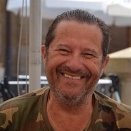





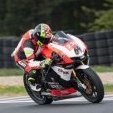
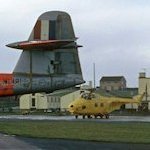

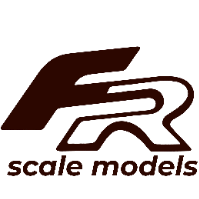
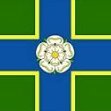
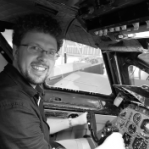


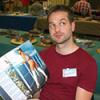
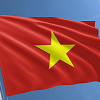



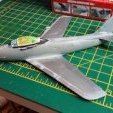
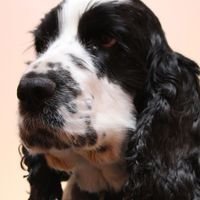
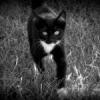
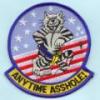

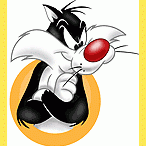

.thumb.jpg.d3635a7ef6507d35f372dd09671fe96f.jpg)


